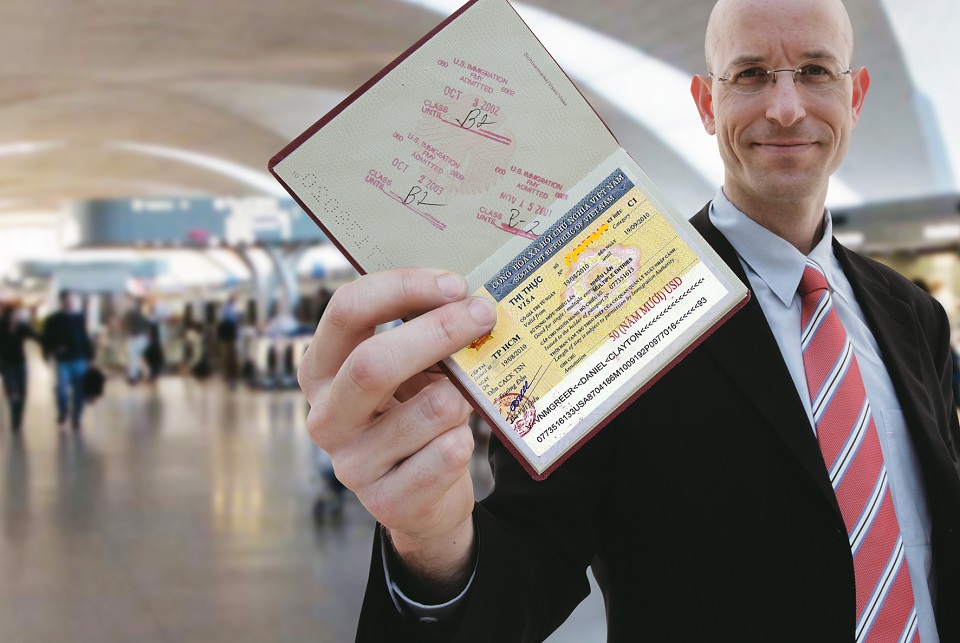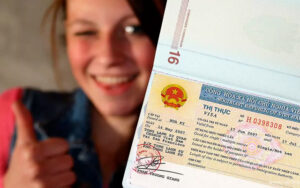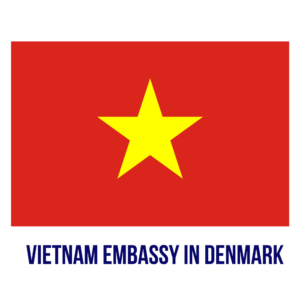Table of Contents
Vietnam eVisa: Streamlined Application for Australian Citizens
Vietnam’s popularity among Australians is undeniable. From backpackers eager to trek in Sapa’s misty mountains to food lovers seeking the freshest pho, the country caters to all passions. The digital transformation of visa services reflects Vietnam’s commitment to welcoming international visitors, particularly from countries like Australia. In this section, we’ll explore what makes the eVisa not just convenient but also transformative for your travel experience.
Why the eVisa Matters in Today’s Travel Landscape
The introduction of the eVisa system couldn’t have come at a better time. In our fast-paced world, convenience and efficiency are center stage in every aspect of travel planning. The eVisa application process, designed specifically for short-term stays such as tourism and business, meets this demand head-on.
What distinguishes the eVisa is its accessibility. Gone are the days of mailing documents, making phone calls, or arranging in-person appointments. Instead, the application can be completed from anywhere—your home, office, or even a cozy café—using any device with internet access.
Moreover, the eVisa addresses common pain points such as uncertainty and anxiety around documentation. By eliminating much of the confusion inherent in traditional visa paperwork, it empowers travelers to focus on what really matters: creating memories in a country renowned for its hospitality and natural splendor.
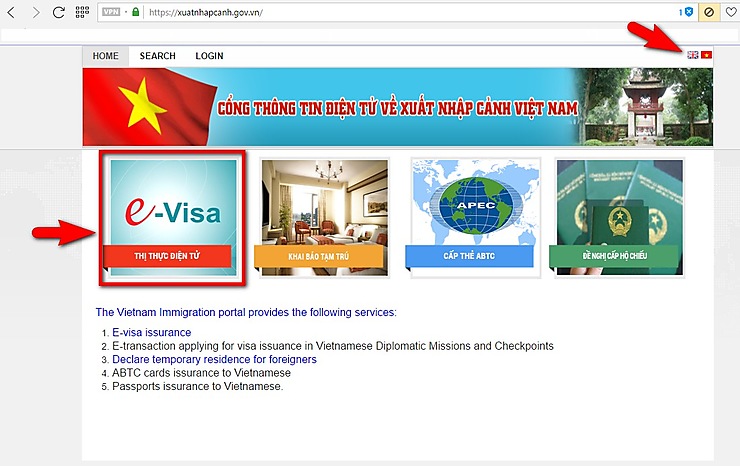
The Rise of Vietnam as a Must-Visit Destination for Australians
Australia and Vietnam share a robust connection, fostered by decades of tourism, trade, and cultural exchange. For Australians, Vietnam offers a tantalizing blend of the familiar and the exotic. Direct flights connect major Australian cities to Hanoi and Ho Chi Minh City, making Vietnam increasingly accessible for both short breaks and extended adventures.
Australian travelers consistently rank Vietnam among their top overseas choices, drawn by affordable prices, welcoming locals, and diverse attractions. Whether exploring UNESCO-listed Hoi An, floating through Ha Long Bay’s emerald waters, or savoring banh mi from a bustling Saigon street stall, each day brings new discoveries.
The eVisa innovation specifically acknowledges this growing interest, streamlining entry for thousands of Aussies who arrive each month. It’s more than just paperwork; it’s an invitation to discover a land where tradition and modernity exist side by side.
How eVisa Simplifies Planning and Enhances Your Trip
The online system is intuitive, with clear instructions and helpful prompts to guide you through each step. Most applicants find that the biggest challenge is simply ensuring their passport details are accurate—a far cry from the bureaucratic marathons of the past.
Once approved, the eVisa arrives via email, ready to print and present upon arrival. There’s no need to queue for a “visa on arrival” letter or manage cumbersome cash payments at the airport. Instead, you step off the plane with everything in order, free to immerse yourself in the sights, sounds, and tastes of Vietnam from your very first moment.
This seamlessness doesn’t just save time—it sets the tone for a positive, stress-free journey. In a world where every minute of vacation counts, the value of a hassle-free entry cannot be overstated.
Eligibility and Requirements for Australian eVisa Applicants
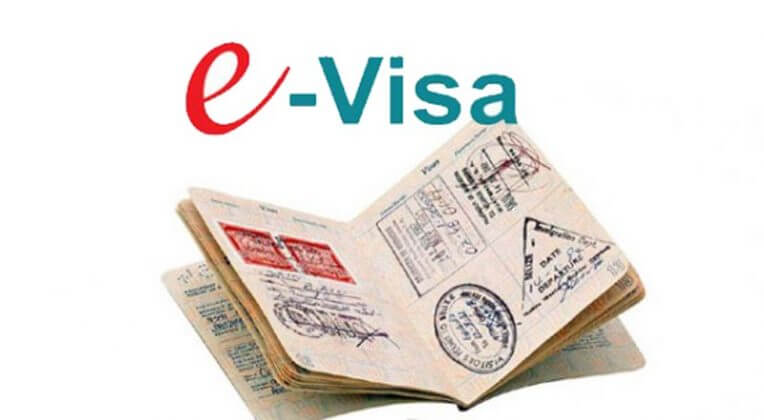
Before diving into the straightforward Vietnam eVisa application process, it’s vital to ensure you meet all eligibility criteria. Australians are among the nationalities most welcomed by Vietnam, but there are key requirements that must be satisfied for a smooth approval.
Understanding these guidelines isn’t just about compliance; it’s about setting yourself up for success before you even click ‘Apply’. Let’s break down the fundamental requirements and offer practical insights for Australian applicants.
Valid Passport and ePassport Recommendations
A cornerstone of the eVisa process is holding a valid Australian passport, with at least six months’ validity beyond your planned departure from Vietnam. This universally accepted rule ensures that travelers don’t encounter problems either entering Vietnam or returning to Australia or another onward destination.
While Vietnam’s current regulations don’t strictly enforce the need for an electronic passport (ePassport), it’s strongly recommended. ePassports contain a digital chip with biometric information which, when scanned, speeds up immigration clearance and reduces the risk of errors or fraud.
From a traveler’s perspective, possessing an ePassport means less waiting in line and more time enjoying your well-earned getaway. Those with older, non-biometric passports should consider renewing ahead of travel, not only for Vietnam but for global mobility.
Purpose of Visit: Tourism, Business, and More
However, those intending to work, study, or take up long-term residence must apply via different channels—typically involving more documentation and sometimes sponsorship from a Vietnamese entity.
It’s crucial to match your stated purpose with your planned activities. Immigration authorities may ask for clarification if your itinerary raises questions. Transparency is always your best strategy. If you’re unsure whether your plans fall within “permitted purposes,” consult Vietnam’s official immigration website or seek advice from the nearest Vietnamese consulate.
Entry/Exit Points and Security Considerations
Not all Vietnamese borders are equipped to process eVisas. Approved entry and exit points include major international airports such as Noi Bai (Hanoi), Tan Son Nhat (Ho Chi Minh City), and Da Nang, along with select land crossings and seaports.
Before booking flights or overland journeys, double-check that your port of entry is eVisa-compatible. This small detail can prevent significant headaches. For example, adventurous travelers heading to remote regions should verify border status before finalizing logistics.
Security checks are also part of the process. Applicants must not have a criminal record or be subject to any travel bans in Vietnam. Background checks are standard practice and help ensure the safety and integrity of the immigration system. Travelers with past legal issues should allow extra time for processing and, if necessary, disclose relevant details upfront.
Accuracy of Application Information
Perhaps the most important requirement is accuracy. Every piece of information you provide—from spelling your name to entering passport numbers—must match your official documents exactly.
Errors, even minor ones, can delay approval or cause denial at the border. Double and triple-check each field before submitting. Take your time, avoid multitasking, and, if possible, ask someone else to review your application before finalizing.
Inaccuracies aren’t just inconvenient—they can jeopardize your entire trip. Treat the application as you would any essential travel document, giving it the attention and care it deserves.
Step-by-Step Guide: Applying for Your Vietnam eVisa Online

Below is a detailed walkthrough, complete with expert tips and creative insights to make your application seamless.
Accessing and Navigating the Official Application Portal
The journey begins at the official website of the Vietnam Immigration Department. Always start here and avoid third-party sites that may charge unnecessary fees or compromise your personal data.
Upon accessing the portal, you might be prompted to create an account using your email address. While not mandatory on all platforms, registering allows you to track your application’s progress and easily retrieve your eVisa once issued. Ensure your email is active and checked regularly; all correspondence, including approval notifications, will be sent here.
Navigation is straightforward, thanks to clearly labeled menus and language options. Read the instructions carefully, especially if English is not your strong suit, and switch to an alternate language if needed.
Completing the Online Application Form: Key Sections and Insights
The heart of the process lies in the online form. Here, you’ll input a range of personal, travel, and identification details. Having your passport and travel plans handy is essential, as you’ll be asked for specifics such as:
- Full name (as per passport)
- Date of birth
- Gender
- Nationality
- Passport number and expiry date
- Proposed dates of entry and exit (within the eVisa’s 30-day window)
- Intended port of entry
- Current residential address
A few creative tips here: When entering names, copy them precisely as they appear in your passport, including middle names and special characters. Any deviation can raise red flags during processing. Additionally, double-check proposed entry and exit dates. Some travelers assume flexibility, but authorities expect precise itineraries.
The form may also request a recent passport-style photograph and a scanned image of your passport’s biographical page. Follow instructions regarding photo size, background color, and file format meticulously. Poor-quality images account for a surprising number of rejected applications.
Uploading Documents and Paying the Visa Fee
Document uploads are typically straightforward, provided you adhere to file type and size limits. Clear, color scans work best. Avoid shadows, glare, or cropping important information.
Next, you’ll move to payment. The eVisa fee is modest—generally around $25 USD—but must be paid via secure online channels (credit or debit card). Upon successful payment, you’ll receive a confirmation and tracking code. Save this code; you’ll need it to check your status and download your eVisa once approved.
Take note: Payment is non-refundable, regardless of approval outcome. This underlines the importance of accurate information and suitable documentation.
If connectivity issues arise or payment fails, wait a few minutes and retry. Should persistent problems occur, use the official helpline or support email listed on the government portal. Never attempt payment via unofficial links or intermediaries.
Tracking and Downloading Your Approved eVisa
After submission, your application enters processing. You can monitor status updates using your unique code. Although most approvals take just three working days, peak periods or incomplete applications may extend this slightly.
When your eVisa is ready, you’ll receive notification via email. Download the PDF and print multiple copies (one for entry, one as a backup). Digital-only copies may not be accepted at all checkpoints, so physical prints remain essential.
Before departing for Vietnam, re-confirm your travel details against your eVisa. Names, passport numbers, and dates must all align perfectly. Store your printed eVisa with your passport and other travel documents for quick retrieval during border checks.
Vietnam eVisa Processing Time and Validity for Australians
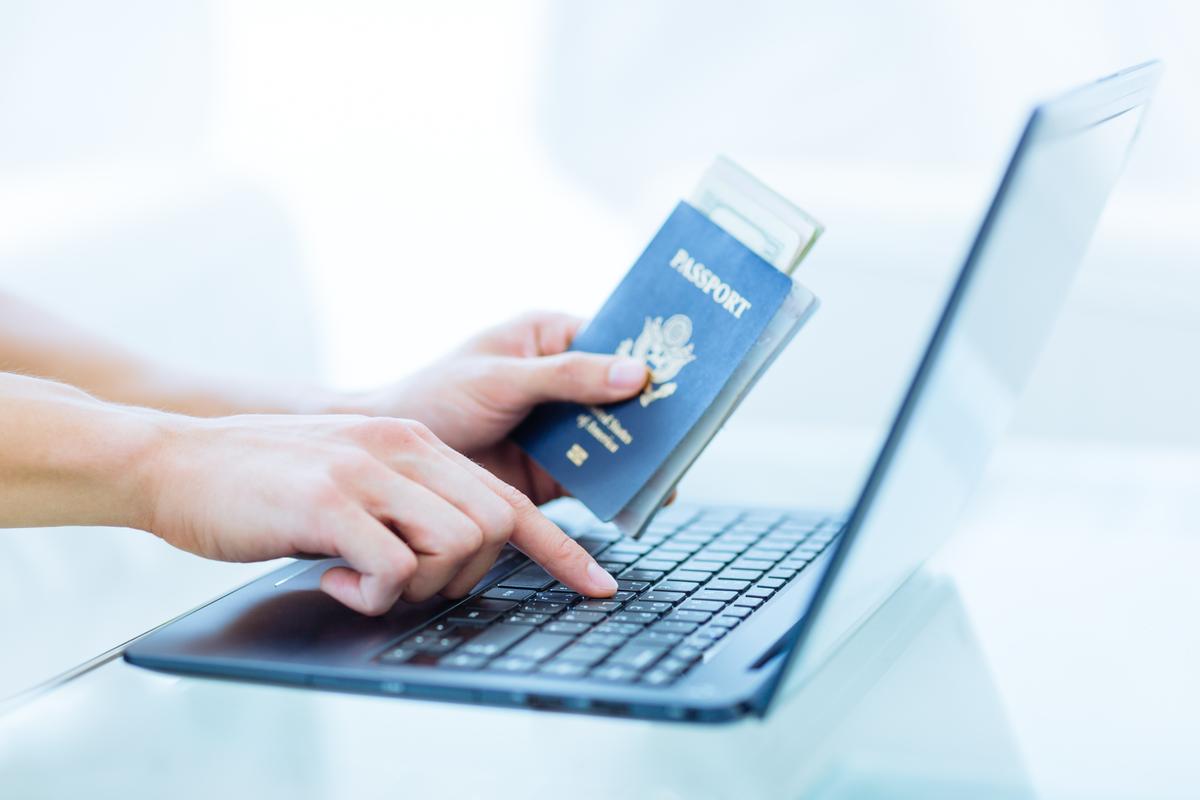
Let’s break down the practical elements of timing, period of stay, and strategies for making the most of your visa.
Typical Processing Times and What Impacts Them
One of the greatest advantages of the Vietnam eVisa is speed. For most Australian applicants, the approval time averages three working days from the date of submission. This brisk turnaround enables even last-minute planners to finalize trips with minimal stress.
However, processing times are not guaranteed. Public holidays (both Vietnamese and international), system upgrades, or surges in demand can lead to occasional delays. Submitting your application at least one week before your intended travel date is a prudent strategy, affording a buffer for unforeseen hold-ups.
In rare cases—such as applications requiring additional security checks—delays may extend to a week or more. To minimize risk, provide complete documentation, double-check for errors, and keep communication lines open via your registered email.
Validity Period: How Long Can You Stay?
The Vietnam eVisa grants single-entry access for up to 30 consecutive days. Your period of stay commences from your specified entry date, not the date of approval. If you enter later than planned, your valid period does not shift accordingly—it remains fixed to your approved window.
This single-entry limitation means that if you leave Vietnam (for example, to visit Cambodia or Laos), your eVisa becomes void, and re-entry requires a new application. For travelers contemplating multi-country itineraries, careful scheduling is essential.
Extensions to your eVisa while in Vietnam are theoretically possible but can be complicated and are not always granted. If you anticipate needing more than 30 days, consider applying for a traditional visa type before departure or structuring your trip within the eVisa’s timeframe.
Making the Most of Your 30 Days in Vietnam
With a full month at your disposal, thoughtful planning is key to maximizing your experience. Many Australians choose to begin in the north—exploring Hanoi, Ha Long Bay, and Sapa—before heading south through historic Hue, charming Hoi An, and finally, the energetic streets of Ho Chi Minh City and relaxing beaches of Phu Quoc.
Given the eVisa’s strict validity, always build in a cushion for unexpected travel disruptions, such as weather delays or changes in itinerary. Arriving a day or two after your approved entry date is permissible (so long as it’s within the overall validity), but staying even one day past your exit date can result in fines or complications upon departure.
If you fall in love with Vietnam and wish to extend your adventure, consult local immigration offices well before your visa expires. Extensions require supplementary paperwork and are not always guaranteed. Alternatively, some travelers opt for a ‘visa run’, temporarily exiting and then reapplying, though this approach requires careful timing and may not always be feasible.
Impact of eVisa on Travel Flexibility
While the eVisa is incredibly convenient, its single-entry nature and fixed duration mean spontaneous changes—like side trips to neighboring countries—require advance planning. Some travelers find this encourages them to slow down and savor Vietnam more deeply, embracing a richer, more immersive experience instead of rushing between borders.
Essential Tips for a Successful Vietnam eVisa Application
Preparing Your Documents and Images
Quality documentation is the foundation of a successful application. Begin by assembling everything you need: a valid Australian passport (with six months’ validity), a recent passport-style photo, and a clear scan of your passport’s biographical page.
For photographs, follow official guidelines closely. Use a plain white background, remove glasses and hats, and ensure your face is centered and visible. Lighting should be bright but even, avoiding harsh shadows. These may sound like minor details, but Vietnamese authorities scrutinize images for compliance, and mistakes can trigger instant rejection.
Digital scans should be crisp and legible, with all text and markings clearly visible. Use color scans rather than black-and-white for maximum clarity. Name your files logically (“surname_passport.jpg”, “surname_photo.jpg”) to make uploading easier and reduce the chance of error.
Avoiding Common Application Pitfalls
Many eVisa rejections stem from simple, avoidable mistakes. Double- and triple-check every entry—especially your name, passport number, and dates. Typos or transposed letters can invalidate your visa.
Another frequent pitfall is mismatching entry points. Make sure the airport, seaport, or land crossing you select during application matches your actual travel plans. If your itinerary changes after submission, contact Vietnamese immigration in advance to discuss options.
Payment glitches are another stumbling block. Use internationally enabled credit or debit cards, and ensure sufficient funds are available. If your card is declined, verify that your bank authorizes foreign transactions.
Lastly, remember that your approved eVisa is non-transferable and cannot be altered once issued. Treat your application as final—any subsequent changes (to port of entry, dates, or personal details) require a new application and fee.
Timing Strategies and Contingency Planning
Applying for your Vietnam eVisa too early is impossible—the earliest window opens roughly 90 days prior to your intended entry. However, applying at the last minute is risky. Start the process at least two weeks before departure, ideally as soon as your flights are booked.
Monitor your email and the application portal daily for updates or requests for additional information. Respond promptly to avoid delays. If you haven’t received a decision within five working days, reach out to the official helpline listed on the government site.
Always print at least two copies of your eVisa and store them separately. Some travelers tuck one in their carry-on and another with their checked baggage, minimizing the risk of loss or damage en route.
Protecting Yourself from Scams and Unofficial Sites
Insist on using only the official Vietnamese government portal. Bookmark this link directly from trusted sources, such as the Australian Department of Foreign Affairs and Trade or Vietnam’s embassy in Australia. If in doubt, seek guidance from reputable travel agents or government offices.
Ignore unsolicited emails or social media messages offering “guaranteed” approvals or special deals. Protect your sensitive information as you would any financial transaction.
Understanding Vietnam’s Entry and Exit Requirements for eVisa Holders
Arrival Procedures: What to Expect at the Airport or Border
Upon landing at one of Vietnam’s designated eVisa entry points, proceed directly to the immigration counters. Present your valid Australian passport, printed eVisa, and—increasingly post-pandemic—any required health declarations.
Expect friendly yet thorough scrutiny of your travel documents. Officers will compare your passport photo to your appearance, cross-check details, and stamp your entry. Having all papers organized and readily accessible makes a strong impression and expedites processing.
Unlike some countries, Vietnam does not require additional forms or payments on arrival for eVisa holders. This “all-clear” system is one of the main reasons why the eVisa process is so highly valued by Australians and other international visitors.
During Your Stay: Compliance and Local Registration
While Vietnam is known for its warm hospitality, it is still important to comply with all local laws and regulations. Carry a copy of your passport and eVisa at all times, especially during internal travel or when checking into accommodations.
Most hotels register guests automatically with local police, but those staying in private homes or rural areas should double-check that their host completes this registration. Failure to register can result in fines or administrative hassles.
Travelers are expected to abide by the terms of their eVisa—no unauthorized employment, study, or long-term residency. Routine police checks are rare but do happen, particularly in tourist hotspots, so keep documentation handy.
Respect local customs, traffic rules, and public behavior standards. Vietnam is generally safe, but awareness of local etiquette ensures a positive experience for both you and your hosts.
Departure Day: Exiting Vietnam with Ease
As your journey concludes, prepare for departure by confirming your flight or transit arrangements and ensuring your eVisa validity has not lapsed. Overstaying, even by a day, can result in fines or complications at the airport, potentially affecting future visa applications.
At your chosen exit point, present your passport and eVisa to immigration officials. If everything is in order, your exit will be processed swiftly. In rare cases, authorities may question your travel history—having records of accommodation, internal flights, or tours can be helpful.
If you plan to return to Vietnam soon after departure, remember that a new eVisa application is required for each entry. Multiple-entry visas are not currently available via the eVisa channel.
Staying organized, punctual, and polite guarantees a seamless conclusion to your Vietnamese adventure and keeps your travel record spotless for whatever explorations may follow.
Special Cases: Land and Sea Entry Points
For Australians venturing beyond the usual air routes—perhaps on Mekong River cruises or overland journeys into Laos or Cambodia—the eVisa still offers flexibility, provided you enter and exit at approved locations.
Always have hard copies of your visa and supporting documents, as connectivity may be limited at remote crossings. Allow extra time for inspection, as these borders may process fewer travelers and operate at variable hours.
If you encounter any issues, seek assistance from official personnel rather than local touts or unlicensed agents. Most border officers speak basic English and are accustomed to helping foreign tourists through formalities.
Conclusion
As you set your sights on Vietnam, embrace the simplicity and certainty that the eVisa provides. Remember to read instructions carefully, prepare your documents thoroughly, and approach your journey with curiosity and respect. Whether you’re sipping coconut coffee in Hanoi’s Old Quarter, cruising beneath limestone cliffs in Ha Long Bay, or exploring the lantern-lit streets of Hoi An, the hardest part—getting in—is already behind you.
So pack your bags, double-check your eVisa approval, and get ready to unlock the magic of Vietnam with confidence and ease. Safe travels, and xin chào to your next great adventure!
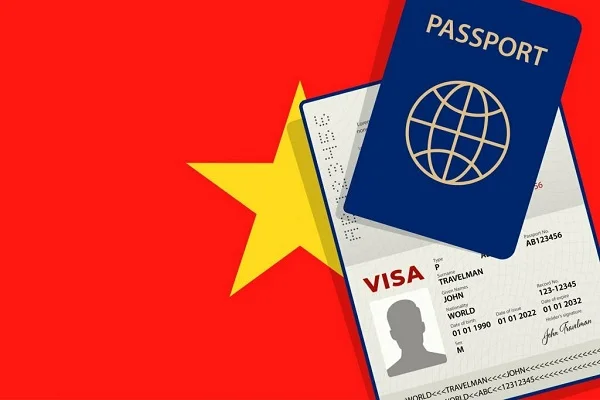
✈️ Airport Fast-Track VIP Services in Vietnam | VisaOnlineVietnam.com
Are you planning to land in Vietnam and want a smooth, stress-free entry at the airport? VisaOnlineVietnam offers premium Airport Fast-Track and VIP Services at the 5 major international airports: Tan Son Nhat (Ho Chi Minh City), Noi Bai (Hanoi), Da Nang, Cam Ranh (Nha Trang), and Phu Quoc. Skip the long queues, save valuable time, and enjoy a worry-free arrival experience.
🚀 What Is the Airport Fast-Track Service?
Our Fast-Track Service ensures you don’t waste time standing in long lines for visa stamping or immigration procedures. Whether you’re arriving after a long flight or traveling with family, our staff will welcome you with a name board and handle all entry procedures for you at the Immigration Counter.
✅ Available at:
-
Tan Son Nhat Airport (Ho Chi Minh City)
-
Noi Bai Airport (Hanoi)
-
Da Nang Airport
-
Cam Ranh Airport (Nha Trang)
-
Phu Quoc Airport
💲 Fee: 40 USD/pax (visa stamping fee excluded)
👑 What Is the VIP Airport Service?
The VIP Service offers premium, diplomatic-level support for important guests, business travelers, or families who need extra comfort and privacy. Our VIP clients are welcomed right at the front of the immigration area, assisted throughout customs and visa clearance, and escorted with care. This service is ideal for corporate clients, elderly travelers, and VIP delegations.
✅ VIP Service Includes:
-
Personalized greeting at aircraft gate or immigration zone
-
Dedicated support through immigration, customs, and luggage pickup
-
Optional car pick-up to your hotel (extra fee applies)
💲 Fee: 60 USD/pax (visa stamping fee excluded)
⭐ Why Choose VisaOnlineVietnam?
-
🕐 Save Time: Skip long lines and enter Vietnam quickly.
-
🧳 Convenient: Ideal for first-time visitors, businesspeople, large families, and those with children or special needs.
-
👨✈️ Professional Staff: Friendly and experienced representatives assist you every step of the way.
-
🌐 24/7 Support: Get help any time before, during, or after your flight.
🛬 How It Works
-
Book Online: Choose Fast-Track or VIP Service when applying for your Vietnam Visa at VisaOnlineVietnam.com
-
Share Your Flight Details: Confirm your arrival airport, airline, and arrival time.
-
Meet Assist: Our team greets you upon arrival with a welcome board.
-
Swift Entry: Skip lines, get stamped, and enjoy your stay.
📍 Service Available At:
-
Tan Son Nhat Airport – Ho Chi Minh City (SGN)
-
Noi Bai Airport – Hanoi (HAN)
-
Da Nang Airport (DAD)
-
Cam Ranh Airport – Nha Trang (CXR)
-
Phu Quoc Airport (PQC)
📞 For bookings or urgent requests, contact us:
-
Email: [email protected]
-
WhatsApp: (+84) 968 18 77 18
-
USA Hotline: +1 (972) 666-0676
✨ Start your Vietnam journey the right way – fast, safe, and worry-free with VisaOnlineVietnam.com!


